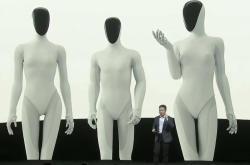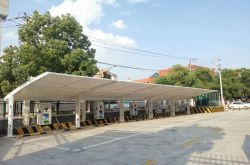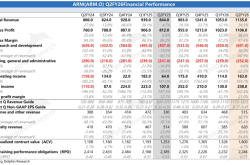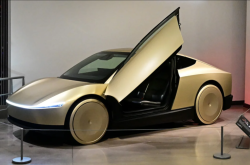SiC Surplus Warning: Can the New Energy Vehicle Industry Absorb the Surge in Capacity Expansion?
![]() 06/19 2025
06/19 2025
![]() 422
422
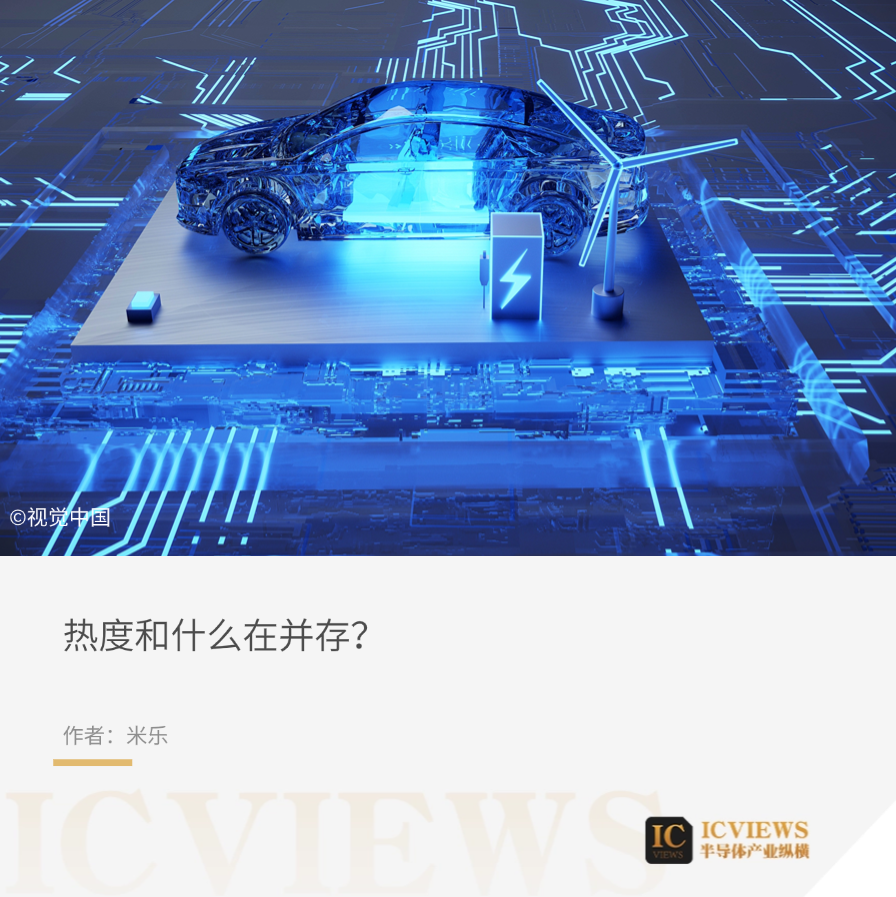
Last year, headlines buzzed with optimism: "Who Will Dominate the EV Market by Embracing SiC?", "The Dawn of Third-Generation Semiconductors", and "Silicon Carbide: Penetrating Half of the New Energy Vehicle Market, Unveiling a Billion-Dollar Era for Third-Generation Semiconductors." These labels painted a promising picture for SiC, signaling a bright market outlook.
However, this favorable scenario did not endure. Reports emerged: "SiC chip prices in China set to drop by up to 30% by 2025", "SiC prices plummet, signaling the second half of the battle"...
As the new energy vehicle industry booms, what lies ahead for SiC?
01
Core Contradiction: Demand Growth Versus Capacity Surge
Forecasts predict that global SiC substrate capacity will reach 4 million units by 2025, while demand is anticipated to be only 2.5 million units.
On the demand side, Tesla's Model 3 pioneered the use of full SiC power module motor controllers in electric vehicles, leveraging SiC's numerous advantages over IGBT. Before the Model 3, all new energy vehicles on the market adopted IGBT solutions. By replacing the IGBT module with a SiC module, the Model 3 accelerated the adoption of wide-bandgap semiconductors like SiC in the automotive industry. Following the "demonstration effect" of the Model 3, multiple automakers have successively adopted SiC solutions. Compared to IGBT, SiC significantly enhances various performance aspects.
In 2024, Tesla will continue to lead the SiC-based BEV market with shipments nearing 2 million vehicles. Despite a 5% decrease from 2023, this slowdown reflects short-term market fluctuations and does not undermine the long-term growth prospects for SiC.
Yole Group predicts that, driven by a strong rebound in electric vehicle demand in 2026, the SiC market will achieve a compound annual growth rate of nearly 20% from 2024 to 2029, with a market size exceeding $10 billion by 2029.
The rise of Chinese automakers has further solidified this trend. BYD, NIO, Geely, and Xiaomi are actively expanding their SiC-based BEV product portfolios, aiming to capture a larger share of the electric vehicle market.
Despite the optimistic market outlook, the SiC industry's supply and demand dynamics are becoming increasingly complex. Many suppliers are increasing their capacity investments, particularly by promoting the transition from 6-inch to 8-inch wafers to enhance production efficiency and reduce unit costs.
However, current end-system demand seems unable to match this scale of expansion. Industry feedback indicates that the total capacity announced by suppliers may exceed the actual consumption of SiC devices in the short term.
From the supply side, to address this challenge, suppliers are dynamically adjusting production volumes based on orders and scaling back some expansion plans to align with market realities in 2024 and 2025.
Vertical integration has emerged as a key strategy in SiC market competition. Leading companies such as STMicroelectronics, ON Semiconductor, Wolfspeed, and Infineon Technologies are increasing their investments in internal wafer fabrication and module production, aiming for $1 billion in revenue growth.
By controlling the entire production chain from wafers to modules, these companies can optimize costs, improve product quality, and swiftly respond to market changes. For instance, Infineon Technologies achieved revenue growth against the trend in 2024 due to its diversified presence in the automotive and industrial sectors, while STMicroelectronics and ON Semiconductor faced pressures due to the slowdown in BEV sales.
This year, Wolfspeed announced the opening of its first, largest, and exclusive 8-inch silicon carbide (SiC) manufacturing facility in Mohawk Valley, New York, USA. Chris McCann, Vice President of Global Project Management at Wolfspeed, and others stated that the facility covers a vast area, with approximately 3,800 construction workers on site during the peak of construction. There is also room for future expansion of 2 million square feet. To date, Wolfspeed has hired over 200 employees for the facility and expects to provide 1,800 jobs when fully operational.
In China, San'an Optoelectronics has officially included its sales of SiC substrates and epitaxy in the operating revenue of integrated circuit products and revealed that it has a supporting capacity of 16,000 6-inch SiC wafers per month. Previous information showed that as of April 2025, Hunan San'an's 8-inch SiC substrate and epitaxy capacity had reached 1,000 wafers per month, with an 8-inch SiC chip production line under construction. Chongqing San'an's 8-inch SiC substrate production line was commissioned in March 2025 with a current capacity of 500 wafers per week, and plans to gradually increase to 10,000 wafers per week.
In terms of joint ventures, AnYiFa Semiconductor, established by Hunan San'an and STMicroelectronics in Chongqing, achieved production line connectivity in February 2025 with an initial capacity of 2,000 wafers per month. The planned annual capacity for 8-inch epitaxy and chips after reaching full production will reach 480,000 units. Additionally, Suzhou Sike Semiconductor, a joint venture between Hunan San'an and Li Auto, has successfully produced Li Auto's self-developed and manufactured SiC power modules, which rolled off the production line on February 13, 2025.
Financial data shows that San'an Optoelectronics achieved operating revenue of approximately 14.5 billion yuan in 2024, a year-on-year increase of 16.7%. Among this, SiC business revenue exceeded 1.14 billion yuan, a year-on-year increase of up to 200%, becoming a significant driver of the company's revenue growth.
02
Signs of Overcapacity Already Apparent?
By the end of 2024, the price of domestic 6-inch SiC MOS substrates had dropped to 2,500-2,800 yuan, with a year-on-year decrease of over 40%, nearing the cost line. From the application side, new energy vehicles are the primary driver of SiC market growth. The price of 6-parallel SiC modules from foreign leaders has fallen below 2,000 yuan, while domestic 6-parallel modules are priced even lower at around 1,500 yuan, accelerating the penetration of SiC devices in the terminal market. Domestic SiC capacity expansion is rapid, further fueled by support from local governments and capital markets. This rapid expansion has also intensified market competition. In 2025, the SiC substrate market will enter a phase of consolidation, with small and medium-sized enterprises facing the risk of elimination due to a lack of financial and technological advantages, while leading enterprises with industrial chain synergy capabilities will capture a larger market share.
The American SiC giant Wolfspeed is deeply entangled in a debt crisis. Behind the halving of its stock price lies a triple dilemma of $6.5 billion in debt, deteriorating performance, and pending government subsidies. Despite holding $12 billion in orders and technological advantages, the slowdown in electric vehicle demand and policy games have put it on the brink of bankruptcy. This crisis will serve as a barometer for the third-generation semiconductor industry.
Moreover, there are substitution threats on the technical front. Concerns about reliability issues have always persisted when using SiC-based power devices, with GaN being seen as a potential solution. There are over 200 types of SiC crystals, each with different stacking structures and arrangements of the four nearest atoms that form the tetrahedral crystal structure. Specifically, they mainly include the "3C", "4H", "6H", and "15R" structures. Each material has distinct physical properties, and 4H, with its high mobility, is specifically used in many power devices. The concern arises when the device is used in an environment with repeated heating and cooling, as it may lead to phase transitions, altering device quality and causing subsequent failures.
For GaN, there are two different structures: hexagonal wurtzite and cubic zinc blende. The former is a stable phase used in device manufacturing, while the latter, though known, is not stable. This is why GaN is preferred over SiC in applications requiring high reliability.
03
The Underlying Deep-Seated Reasons
Currently, the US government has committed to providing over $700 million (approximately 5.1 billion yuan) in funding for the project and has already allocated some funds for site preparation. However, most of the funding depends on whether Wolfspeed meets the recruitment standards set by the state government. Simultaneously, Wolfspeed plans to further secure federal funding through the CHIPS Act.
Thomas Werner, the interim CEO of Wolfspeed, stated that maintaining the United States' competitiveness in semiconductor technology is a concern shared by both parties, and the funding for the project will remain unchanged regardless of future political changes.
According to previous reports, Wolfspeed's Chatham factory held a topping-out ceremony for its first phase of construction in March 2024, and some crystal growth furnace equipment has entered the site. Production is expected to commence in the first half of 2025. Upon completion and reaching full production capacity, it will expand Wolfspeed's SiC substrate production by 10 times.
It's worth noting that since 2019, Wolfspeed's factories have undergone a process of first expanding capacity and then restructuring. From 2019 to 2023, due to strong market demand and insufficient capacity within Wolfspeed itself, the company announced a total of four capacity expansion plans with a total investment exceeding $6.5 billion (approximately 47.3 billion yuan).
Irrational investment driven by policy may have also cast a shadow over the SiC market.
04
Automakers' Strategic Shifts
In 2024, Mercedes-Benz announced an adjustment to its original target of achieving full electrification sales in major markets by 2030. This decision was primarily based on market demand falling short of expectations and the slowing growth rate of global electric vehicle demand. Mercedes-Benz found that the adoption of electric vehicles was slower than anticipated, and there were significant differences in market acceptance and development pace for new energy vehicles across regions.
BMW has adopted a strategy of parallel development of fuel vehicles and electric vehicles. Although BMW continues to promote the electrification process, it has not ceased research and production of fuel vehicles. BMW believes that for a considerable period in the future, electric and fuel vehicles will coexist in the market. Therefore, BMW has chosen a more flexible development path, simultaneously developing a new generation of internal combustion engines to meet increasingly stringent emission standards.
Toyota has also made adjustments to its electrification strategy. In 2022, Toyota canceled production plans for some electric vehicle models and clearly stated that electric vehicles are not the sole solution to environmental problems. Toyota places more emphasis on the development of hybrid and hydrogen energy technologies, believing that electric vehicles may introduce new environmental issues during production and battery recycling.
Due to poor electric vehicle sales and potential safety hazards, Ford announced a reduction in its focus on the electric vehicle sector.
Meanwhile, China's new-energy vehicle startups are accelerating the localization of SiC technology through vertical integration. NIO has successfully developed and mass-produced its first 900V SiC electric drive system, which is equipped on ET7 and other second-generation platform models, achieving a 30% reduction in module costs. Xiaopeng Automobile's SiC control module, jointly developed with local suppliers, enhances the charging efficiency of its G9 model by 25%. This differentiated path stems from three key factors: First, China has established a relatively complete SiC industry chain, with a localization rate of 40% from substrates (Tanke Heda) to devices (BYD Semiconductor). Second, new-energy vehicle models are generally positioned as high-end, capable of absorbing the premium cost of SiC. More importantly, independent control over core technologies helps build differentiated competitiveness. For example, NIO's self-developed modules have increased its maximum current carrying capacity by 15%. Industry data shows that although there have been fluctuations in global automakers' SiC model plans, the penetration rate of SiC in China's electric vehicle market has maintained an average annual growth rate of 50%, indicating that the differentiation in technological routes may persist throughout the industrial transformation period.

